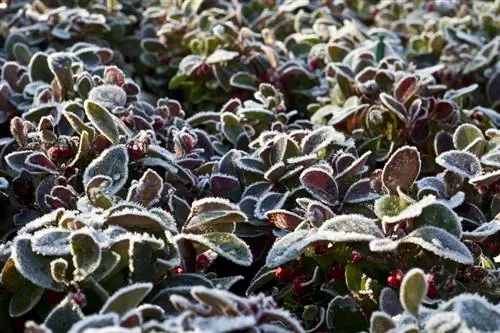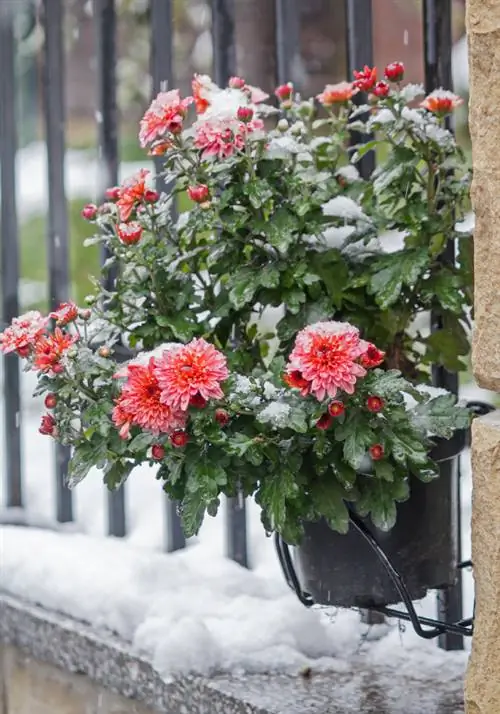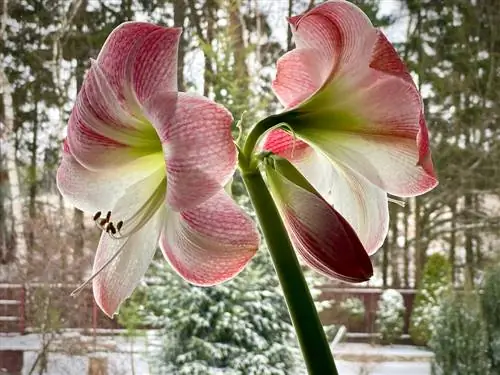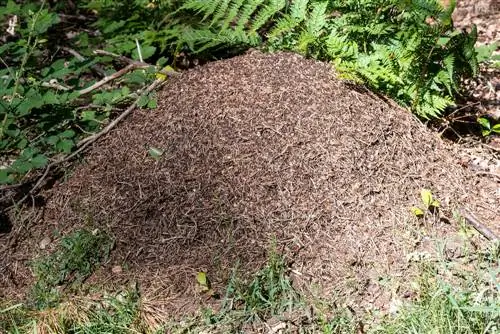- Author admin [email protected].
- Public 2023-12-16 16:46.
- Last modified 2025-01-23 11:20.
Especially in the gray autumn and winter months, the hardy partridgeberry is an ideal plant for gardens, balconies and terraces. The leaves of the perennial, which is often used as a ground cover, change color and shine particularly beautifully in winter. The berries, which are hardly poisonous, are also a popular Christmas decoration.

Is the partridgeberry hardy and does it need winter protection?
The partridgeberry is absolutely winter hardy and does not require winter protection in the garden. When planting in containers, it can be helpful to insulate the planter from frost from below. Make sure to water the plant adequately when it is dry.
The partridgeberry is absolutely hardy
The partridge berry or false berry (Gaultheria procumbens) belongs to the heather family. Just like this one, the low perennial is completely hardy.
It can easily survive even the lowest temperatures in the garden.
Winter protection in the garden is not necessary
The partridgeberry is so hardy that winter protection is unnecessary. You should therefore not cover the perennial, but simply let it grow. If it is covered by snow, it is better to leave it there.
Covering the partridgeberry in winter is not recommended because of its colored leaves. It is planted in the garden precisely because of its beautiful colored foliage and the decorative berries, which often still hang on the bush even in winter. With a cover, the plant would hardly be effective.
Partridge berries cannot tolerate long dry periods. In very dry winters, you should give some water on frost-free days.
Partridgeberry in the pot needs little winter protection
If you grow partridge berries in a pot or balcony box, you will have a natural, very pretty Christmas decoration.
However, the soil freezes much quicker in the box or bucket than in the garden. If the temperatures fall very sharply, it may make sense to protect the planter from frost from below.
Place the bucket on a piece of wood (€13.00 on Amazon) or a Styrofoam plate to insulate it. You should remove balcony boxes and place them in a somewhat sheltered location during the frost period. Water the perennials from time to time so that the soil does not dry out completely.
Prolong the flowering period until autumn by cutting correctly
Partridgeberries bloom in July and August. Cut them down a little in spring to delay the flowering period a little.
It's worth it, because then the partridge berries bloom at the beginning of autumn and the foliage takes on its bright, bronze color, especially at Christmas time.
Tip
If you rub the leaves of the partridge berry between your fingers, they release a very aromatic scent. It's a little reminiscent of the smell of chewing gum.






